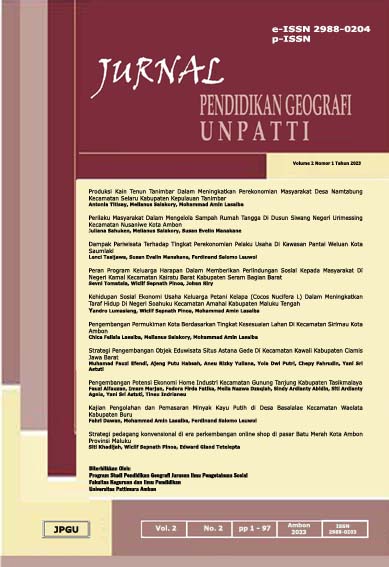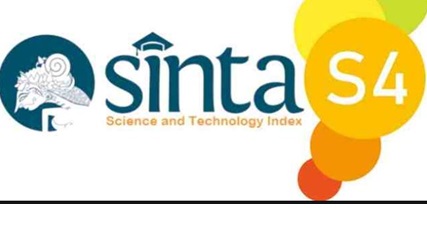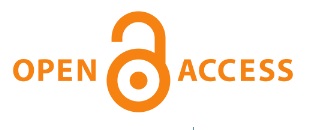Kajian Kualitas dan Kuantitas Air Sumur Umum di Dusun Huse Desa Sanahu Kecamatan Elpaputih Kabupaten Seram Bagian Barat
Study on the Quality and Quantity of Public Well Water in Huse Hamlet, Sanahu Village, Elpaputih District, West Seram Regency
Abstract
Water is a vital resource for human life; however, its availability in sufficient quantity and good quality remains a challenge, especially in rural areas. This study aims to evaluate the quality and quantity of public healthy water in Huse Hamlet, Sanahu Village, Elpaputih District, West Seram Regency, based on the standards outlined in the Indonesian Ministry of Health Regulation No. 416/Menkes/Per/IX/1990. A descriptive approach was used, analyzing physical, chemical, and biological water parameters. The results show that the healthy water is physically considered safe, with color, turbidity, and total dissolved solids (TDS) within acceptable limits. However, the iron levels (2.06 mg/L) and chloride (1836 mg/L) exceeded the chemical thresholds. Biologically, total coliform and fecal coliform counts reached 240 MPN, far above the allowed standard, although Escherichia coli was not detected. In terms of quantity, the water supply is generally sufficient according to the community, although seasonal variations and tidal influences affect the volume. Therefore, improved water management strategies are needed, such as filtration systems, infrastructure development for clean water distribution, and community education on water conservation.














